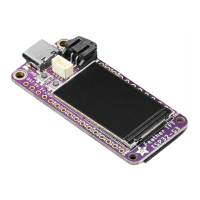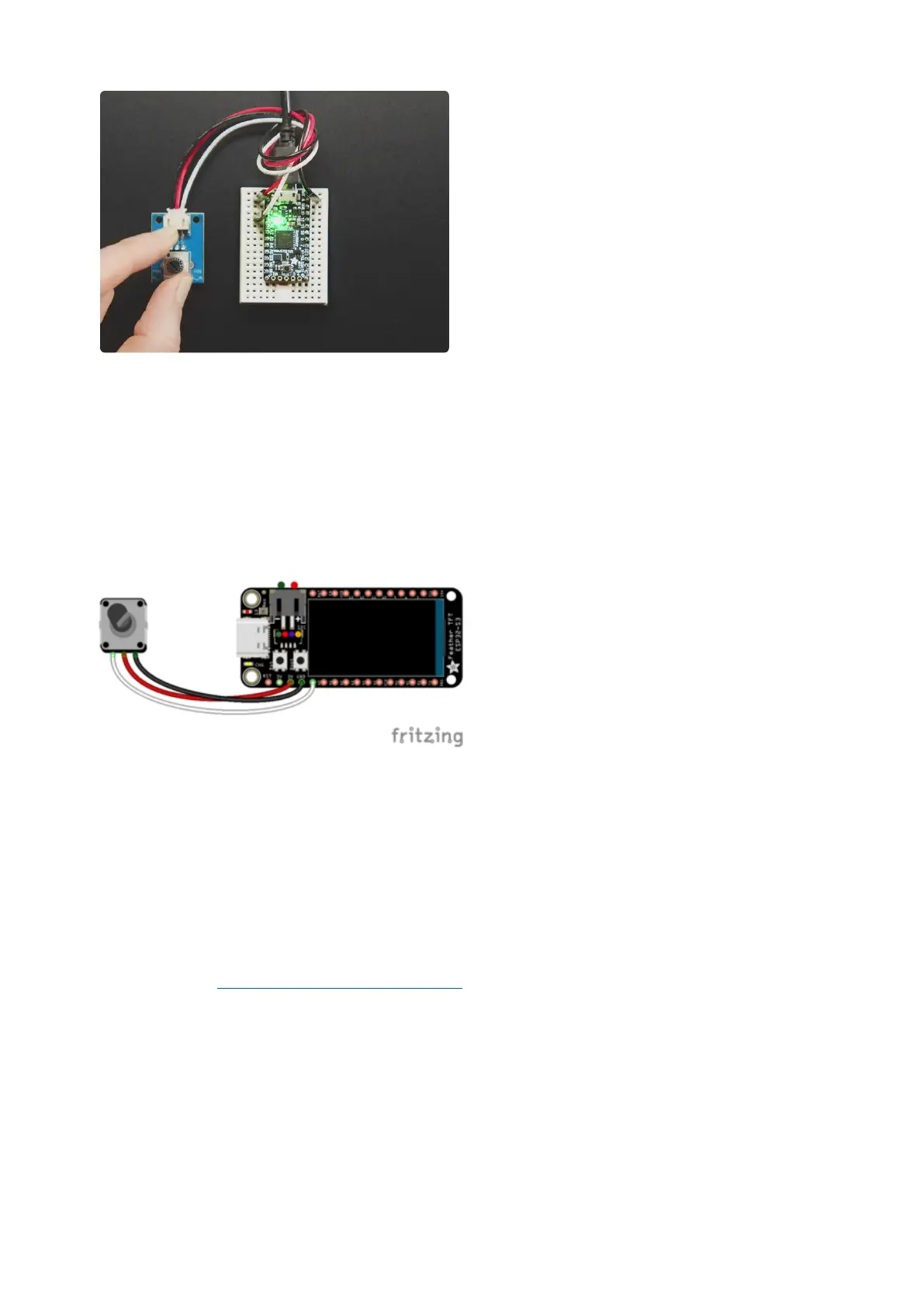STEMMA Wired Potentiometer Breakout
Board - 10K ohm Linear
For the easiest way possible to measure
twists, turn to this STEMMA potentiometer
breakout (ha!). This plug-n-play pot comes
with a JST-PH 2mm connector and a
matching
https://www.adafruit.com/product/4493
Wire Up the Potentiometer
Connect the potentiometer to your board as follows.
Potentiometer left pin (white wire) to
Feather A0
Potentiometer center pin (red wire) to
Feather 3.3V
Potentiometer right pin (black wire) to
Feather GND
Reading Analog Pin Values
CircuitPython makes it easy to read analog pin values. Simply import two modules, set
up the pin, and then print the value inside a loop.
You'll need to connect to the serial console() to see the values printed out.
In the example below, click the Download Project Bundle button below to download
the necessary libraries and the code.py file in a zip file. Extract the contents of the zip
file, open the directory CircuitPython_Templates/analog_pin_values/ and then click
on the directory that matches the version of CircuitPython you're using and copy the
contents of that directory to your CIRCUITPY drive.
Your CIRCUITPY drive should now look similar to the following image:
©Adafruit Industries Page 134 of 263

